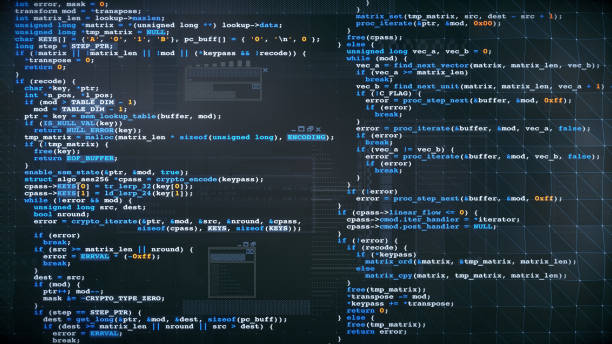From the earliest myths to the most advanced physics, humanity has been haunted by the question of time. We live our lives as though caught in a river, carried ceaselessly from past to future, unable to reverse course. Yet our imaginations have always rebelled against this one-way current. Ancient myths spoke of gods who could step outside time, while folklore told of enchanted sleeps where centuries passed in a moment. Modern literature gave us machines that could traverse centuries with the turn of a dial. The dream of time travel is as old as human storytelling, and its persistence reveals a deep longing: the desire to break free from the tyranny of time.
But is time travel more than fantasy? Could the laws of physics—so often stranger than fiction—actually permit us to journey backward or forward through time? This question lies at the intersection of imagination and science, and to explore it is to embark on one of the most exhilarating intellectual adventures in human history.
Time in the Language of Physics
To ask whether time travel is possible, we must first ask: what is time? To everyday intuition, time feels absolute, a universal clock ticking uniformly for everyone, everywhere. This was the assumption of classical physics, especially in the system laid down by Isaac Newton. For Newton, time was a fixed stage on which the events of the universe unfolded. Just as space provided a backdrop for the positions of objects, time provided a universal measure of change.
Yet in the early twentieth century, Albert Einstein shattered this picture. His special theory of relativity showed that time is not absolute but relative, intertwined with space in a four-dimensional continuum known as spacetime. In this framework, time can flow at different rates for different observers depending on their speed. A clock moving near the speed of light ticks more slowly compared to one at rest. This effect, called time dilation, has been confirmed in countless experiments. It means that time travel into the future is not only possible but already a physical reality.
When astronauts orbit Earth in the International Space Station, they experience time at a slightly slower rate than people on the ground due to both their velocity and the weaker pull of Earth’s gravity. After months in space, they return a fraction of a second younger than their terrestrial counterparts. This is not science fiction but experimentally measured fact. The challenge lies not in traveling forward—it is already part of nature—but in exploring whether a return to the past might also be possible.
Einstein’s Curved Universe
Special relativity was only the beginning. Einstein’s general theory of relativity, published in 1915, revealed that gravity is not a force pulling objects across empty space but the curvature of spacetime itself. Massive objects like stars and planets bend spacetime, and smaller objects move along these curves. This vision of the universe opened the door to possibilities that Newton’s framework could never have imagined.
Among Einstein’s equations are solutions that permit extraordinary structures known as closed timelike curves. These are paths through spacetime that loop back on themselves, theoretically allowing an object—or a person—to return to their own past. Though exotic and often requiring conditions not found in the ordinary universe, such solutions are not forbidden by general relativity. They hint at the possibility that time travel, at least mathematically, lies within the laws of physics.
One of the most famous of these solutions is the Gödel universe, discovered by mathematician Kurt Gödel in 1949. In this model, the entire cosmos rotates, dragging spacetime into loops that could allow travelers to revisit the past. Though our universe does not appear to rotate in this way, Gödel’s model stands as a profound reminder: relativity does not forbid time travel. It simply makes it difficult.
Black Holes and the Edges of Time
If general relativity provides a playground for time travel, black holes are its most mysterious toys. These regions of spacetime, formed when massive stars collapse under their own gravity, contain singularities where density becomes infinite and the known laws of physics break down. Around them lies the event horizon, the point of no return, beyond which nothing—not even light—can escape.
The intense warping of spacetime near black holes creates bizarre effects. For an observer falling toward the event horizon, time slows dramatically relative to someone far away. In theory, a traveler could approach a black hole, orbit close to its edge, and experience time at a slower rate. To distant observers, centuries might pass while only hours tick by for the traveler. Emerging from such an orbit, the traveler would find themselves flung into the future.
Even stranger possibilities arise when considering hypothetical structures known as wormholes. These are theoretical tunnels through spacetime, connecting distant regions—or even different times—like shortcuts through the cosmic fabric. A wormhole stabilized by exotic matter, if such matter exists, could in principle allow a person to step in at one end and emerge at another not only in space but in time. Wormholes remain speculative, but they illustrate how relativity leaves the door to time travel tantalizingly ajar.
The Paradoxes of the Past
While the laws of physics may permit time travel, logic raises daunting challenges. Chief among them are the paradoxes of the past. Imagine stepping into a time machine and traveling back before your birth. If you were to prevent your grandparents from meeting, you would erase your own existence. Yet if you never existed, you could never have traveled back in the first place. This is the classic grandfather paradox, a riddle that seems to undermine the very possibility of backward time travel.
Physicists and philosophers have grappled with such paradoxes for decades. Some argue that the laws of the universe simply forbid actions that would create contradictions. In this view, if you traveled back in time, events would conspire to prevent you from changing the past in ways that erase the present. You might try to stop your grandparents’ meeting, but somehow you would always fail, your actions becoming part of history rather than a disruption of it.
Others propose a more radical solution: the existence of parallel universes. In this interpretation, traveling to the past creates a branching timeline. When you prevent your grandparents from meeting, you do not erase your own existence but instead create a new universe in which you were never born. Meanwhile, in the original universe, events unfold unchanged. This multiverse interpretation, while speculative, offers a way to resolve paradoxes by expanding reality itself.
Time Travel in Quantum Realities
If relativity opens the door to time travel through geometry, quantum mechanics offers a different, more mysterious key. Quantum theory describes the behavior of particles at the smallest scales, where probabilities replace certainties and reality seems to flicker between possibilities. At this level, time itself may not flow as smoothly as we perceive it but may be granular or even bidirectional.
One striking feature of quantum mechanics is entanglement, in which particles separated by vast distances appear instantly linked, their states correlated in ways that defy classical logic. Some physicists have speculated that such nonlocal connections hint at a deeper structure of time, one in which the boundaries between past, present, and future are more porous than we realize.
In 1991, physicist David Deutsch proposed a model in which quantum mechanics could permit consistent time travel. According to his framework, the probabilities inherent in quantum systems might smooth over paradoxes. A time traveler could interact with the past, but the outcomes would always be self-consistent, preventing contradictions. Though highly theoretical, such ideas reveal how quantum theory challenges our most basic assumptions about causality and time.
The Arrow of Time
Even if physics permits time travel, one question remains: why does time seem to flow in only one direction? We remember the past but not the future, we grow older but never younger, and entropy—the measure of disorder—always increases. This asymmetry, known as the arrow of time, is one of the deepest mysteries in science.
The laws of physics themselves are mostly time-symmetric. Equations describing the motion of particles or the evolution of waves work just as well forward as backward. Yet the universe we experience is not symmetric. Broken eggs do not reassemble, smoke does not return to a candle, and we cannot recall tomorrow.
The arrow of time is believed to emerge from the conditions of the early universe. At the Big Bang, the universe began in a state of extraordinarily low entropy, a condition of remarkable order. As time progresses, disorder naturally increases, giving rise to the flow we perceive. But why the universe began in such an ordered state remains one of cosmology’s greatest puzzles. Until we fully understand the arrow of time, the possibility of reversing it through travel into the past remains deeply uncertain.
The Practical Barriers
Even if relativity and quantum theory do not forbid time travel, the practical obstacles are staggering. To create a traversable wormhole or a time machine, one might require forms of matter with negative energy density—so-called exotic matter—that have never been observed in sufficient quantities. Stabilizing such a structure would likely demand energy on a scale rivaling that of entire stars. The engineering challenges are beyond anything conceivable with current technology.
Moreover, the very act of creating a time machine could destabilize the universe around it. Some calculations suggest that attempts to form closed timelike curves might generate uncontrollable feedback, destroying the wormhole or collapsing spacetime itself. If this is true, then nature protects its chronology with cosmic safeguards, ensuring that the paradoxes of the past never materialize.
Time Travel in Culture and Imagination
Even if physics resists our attempts to build a time machine, time travel thrives in the human imagination. Literature and film have made it one of the most enduring tropes of storytelling, from H. G. Wells’s The Time Machine to modern sagas like Doctor Who and Back to the Future. These stories give voice to our longing to revisit lost moments, to undo mistakes, or to glimpse futures yet to come.
What makes these tales so powerful is not only the fantasy of breaking time’s chains but the moral and emotional questions they pose. If given the chance, would we change the tragedies of history, or would doing so erase the hard-won lessons of the past? Would glimpsing the future give us hope or rob us of free will? Through fiction, we wrestle with these questions, even if science leaves them unresolved.
Living with Time
Ultimately, whether or not time travel is possible in practice, the pursuit of the question itself enriches our understanding of the universe. By probing the mysteries of time, physicists have uncovered some of the most profound truths about reality: the relativity of simultaneity, the curvature of spacetime, the probabilistic fabric of the quantum world, and the inexorable rise of entropy.
And yet, there is a deeper lesson. Perhaps our fascination with time travel reflects less a desire for technology than a yearning of the human spirit. We long to revisit the moments we have lost, to see loved ones once more, or to undo mistakes that haunt us. We dream of leaping into the future to glimpse the fate of humanity, to know that our struggles and hopes are not in vain. Time travel is, in this sense, a mirror of our longing for meaning in the face of impermanence.
The Present as Our Time Machine
While we may not have machines that can bend spacetime at will, we already possess a form of time travel: memory and imagination. In remembering, we revisit the past, reliving moments that shape who we are. In imagining, we project ourselves into the future, charting paths not yet taken. Our minds, in their capacity to transcend the present, are time machines of a different kind.
Science may one day reveal mechanisms for physical time travel, but even now, we carry within us the ability to move through time in the ways that matter most. The past lives in our memories, the future in our hopes, and the present in the choices we make each day.
Conclusion: The Journey That Never Ends
So, is time travel possible? The most honest answer is both yes and no. Yes, because the laws of physics, as we understand them, do not entirely forbid it. Time dilation already shows us glimpses of the future, while relativity and quantum theory hint at deeper possibilities. And no, because the practical barriers may be insurmountable, and the paradoxes of the past may forever bar us from rewriting history.
But perhaps the true wonder of time travel is not in building machines of steel and energy but in the journey of thought that the idea inspires. To ask whether time travel is possible is to confront the deepest mysteries of existence: what time is, why it flows, and how we, fragile creatures caught in its stream, can make meaning of our lives.
In the end, time travel may remain forever a dream. Yet in dreaming it, we travel further than any machine could carry us—into the heart of the universe, into the mysteries of existence, and into the depths of what it means to be human.






